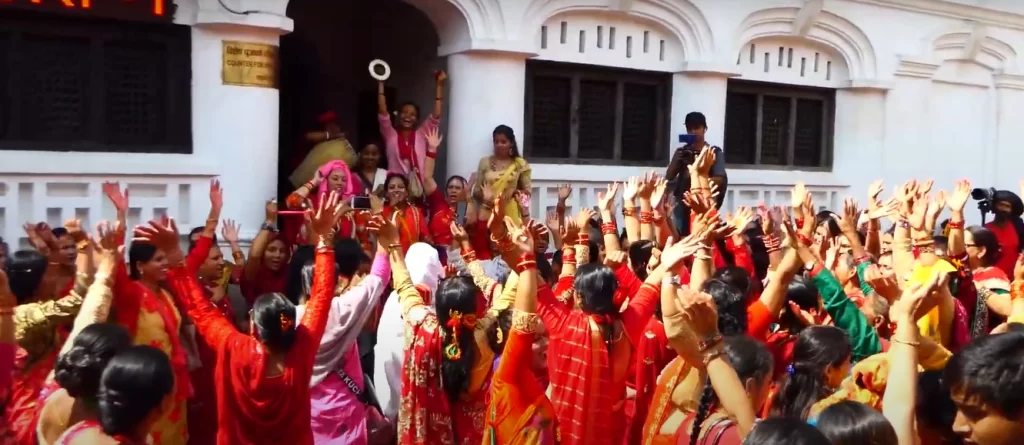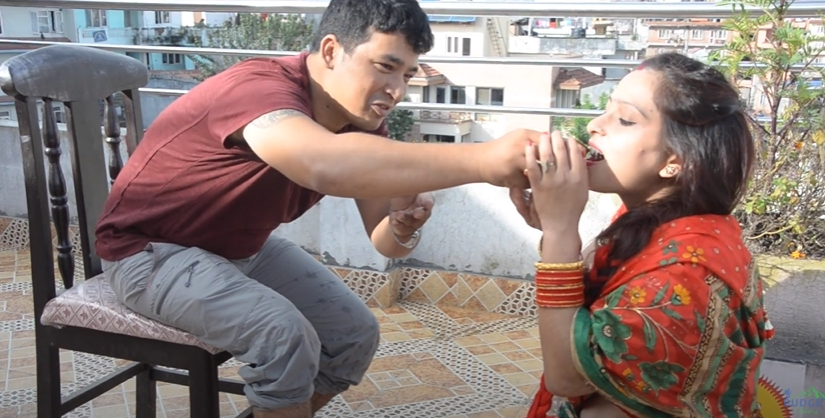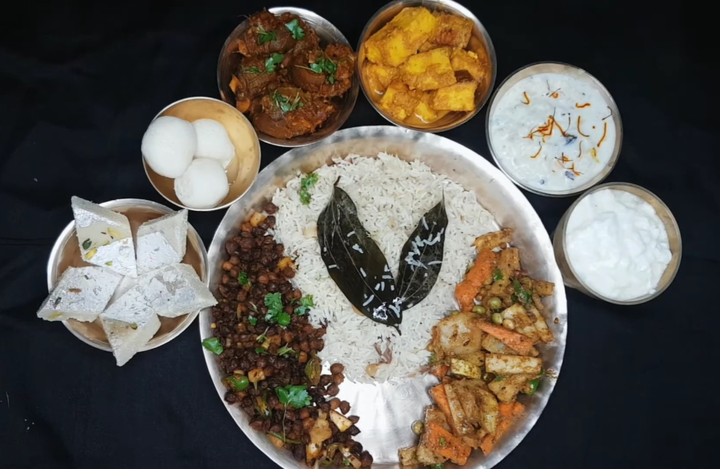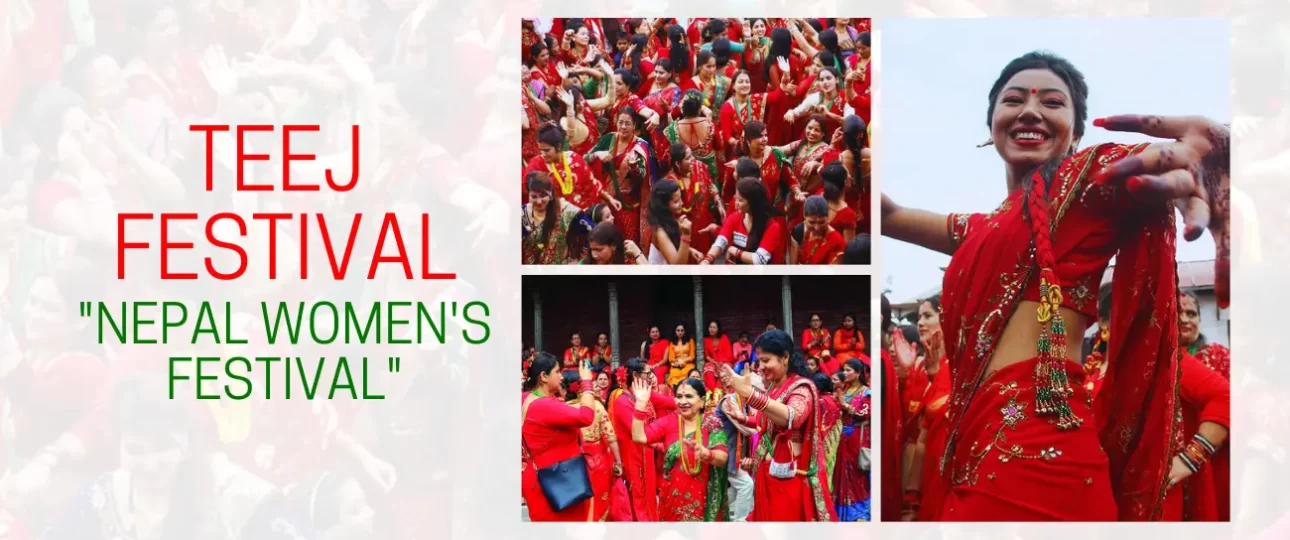Teej Festival: A Celebration of Women, Devotion, and Tradition
The Teej Festival is one of the most significant and cherished festivals in Nepal, particularly among Hindu women. It is a celebration that combines religious devotion, cultural practices, and social gatherings. Observed primarily by women, Teej is dedicated to Goddess Parvati and her union with Lord Shiva, symbolizing the sacred bond of marriage. The festival typically falls in the month of August or early September, aligning with the Nepali month of Bhadra.
Origins and Significance of Teej Festival
The Teej Festival, rooted in Hindu mythology, is celebrated to honor the devotion of Goddess Parvati, who underwent rigorous penance to win the love of Lord Shiva. It is believed that on this day, Parvati was united with Shiva after years of intense devotion, making the festival a tribute to her perseverance and dedication. As a result, Teej is considered a day for women to seek marital bliss, the well-being of their spouses, and the prosperity of their families.

Rituals and Observances on Teej
Teej is celebrated over three days, each with its distinct rituals and significance:
Dar Khane Din (Feast Day): The first day of Teej, known as Dar Khane Din, is a day of indulgence. Women gather with their friends and relatives to enjoy a lavish feast, often at their maternal homes. The meal is rich and varied, symbolizing the abundance and joy of life. This day is marked by singing, dancing, and the sharing of stories, creating an atmosphere of warmth and camaraderie.
Fasting Day: The second day is the most significant, where women observe a strict fast, abstaining from food and water for 24 hours. This fast is known as Nirjala Brata, and it is believed that by enduring this penance, women can ensure the longevity and happiness of their husbands. Even unmarried women participate, praying for an ideal partner. The day is spent in prayer and devotion, with women dressed in vibrant red saris, symbolizing auspiciousness and marital bliss.
Rishi Panchami: The third day, known as Rishi Panchami, is dedicated to cleansing and purification. Women perform rituals to wash away sins and seek blessings for a pure and virtuous life. They bathe in holy rivers, offer prayers, and make offerings to the Sapta Rishi (seven sages). This day emphasizes the spiritual aspect of Teej, reminding women of their duties and responsibilities within the household and society.
Cultural Expressions of Teej
Teej is not just a religious festival; it is also a celebration of Nepali culture and tradition. The streets and temples are adorned with colorful decorations, and women are seen in their finest attire, often in shades of red, green, and yellow. The traditional Teej songs, known as Teej Geet, play an integral role in the festivities. These songs, passed down through generations, express the joys, sorrows, and aspirations of women, offering a glimpse into their lives and experiences.
Dancing is another important aspect of Teej. Women form circles and dance to the rhythm of traditional drums and music, often continuing late into the night. The dance is a form of expression, a way to release emotions, and a means to connect with other women.
What Colors and Attire Do Women Wear on Teej?
The colors worn during Teej, particularly red, green, and yellow, are rich in symbolism and reflect the festival’s themes of love, fertility, and purity.
Red is the most prominent color, symbolizing love, passion, and marital bliss. It is the color of the bridal sari, and during Teej, married women wear red to honor their marriage and pray for the longevity and well-being of their husbands.
Green represents new life, growth, and fertility, making it a color of hope and renewal. Women often adorn themselves with green bangles and other accessories to symbolize their wishes for a prosperous life.
Yellow, associated with the sun and brightness, represents purity and peace. The use of these colors during Teej not only reflects the festive mood but also reinforces the cultural values and beliefs associated with the festival.

Regional Variations of Teej Festival
In Nepal, Teej is celebrated with slight variations across different regions, reflecting the country’s diverse cultural landscape. In the hilly regions, particularly in Kathmandu Valley, the celebrations are more urbanized and include large gatherings in temples like Pashupatinath, where thousands of women gather to offer prayers.
In contrast, in the Terai region, the celebrations might be more family-oriented, with a focus on local traditions and customs. For example, the songs and dances performed during Teej can vary from region to region, with some areas incorporating local dialects and musical instruments into the festivities.
These regional differences highlight the cultural richness of Nepal and how Teej is a festival that brings together various traditions under a common theme of devotion and celebration.
Role of Men During Teej
Although Teej is predominantly a festival for women, men also play an essential role in the celebrations, particularly in supporting their female family members. On the day of Dar Khane Din, it is customary for men to prepare and serve the feast, giving women a break from their usual household responsibilities. This act of service is seen as a gesture of appreciation and respect for the women in their lives.
In some households, men also help with the household chores during the fasting day, ensuring that the women can focus on their prayers and rituals without distraction. This aspect of Teej highlights the importance of family unity and mutual respect between genders, adding depth to the festival’s significance.

Culinary Traditions
The culinary traditions of Teej are an integral part of the festival, with the feast on Dar Khane Din being one of the most anticipated aspects.
The meal is typically elaborate, featuring a variety of traditional Nepali dishes. Sel roti, a ring-shaped, deep-fried rice bread, is a staple during Teej and is often served with methi, a spicy fried cake made from lentils.
Other popular dishes include kurma (a type of sweet pastry) and aaloo tama (a curry made from potatoes and bamboo shoots). Sweets like laddoo and barfi are also common, adding to the festive spirit. These dishes are not only enjoyed for their taste but also for their cultural significance, as they are prepared with love and care, reflecting the importance of family and togetherness during Teej.

The Modern-Day Teej
In recent years, the Teej Festival has evolved, with its celebrations becoming more elaborate and widespread. Urbanization and social media have contributed to the commercialization of Teej, with organized events, fashion shows, and social gatherings becoming a part of the festivities. However, the essence of the festival remains unchanged, with women continuing to observe the rituals with the same devotion and enthusiasm.
Teej has also gained recognition as a platform for raising awareness about women’s rights and issues. Various organizations use the occasion to highlight the importance of gender equality, health, and education for women, blending traditional practices with modern values.
Teej and Women’s Empowerment
In recent years, Teej has evolved into more than just a religious and cultural festival; it has become a platform for promoting women’s empowerment. Social media and organized events during Teej are increasingly being used to raise awareness about women’s rights, education, and health.
For instance, various non-governmental organizations (NGOs) and women’s groups use the occasion to discuss issues like gender equality, domestic violence, and the importance of female education. This modern adaptation of Teej reflects a shift towards a more progressive society, where traditional practices are being reinterpreted to support contemporary values of empowerment and social justice.
Conclusion
The Teej Festival of Nepal is a unique blend of religious devotion, cultural expression, and social interaction. It is a celebration that honors the strength, resilience, and spirituality of women, while also fostering a sense of community and belonging. As Nepal continues to embrace modernity, Teej remains a cherished tradition, preserving the rich heritage and values of its people.
Whether you are a participant or an observer, the Teej Festival offers a profound insight into the lives and culture of Nepali women, making it an event that transcends religious boundaries and touches the hearts of all who experience it.



